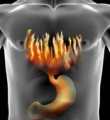There are oils we should avoid totally:
The worst type of oil is an ingredient in packaged foods including some stick margarines, baked goods, chips, crackers and candy. Partially hydrogenated oil is vegetable oil that has been chemically altered so it’s less likely to spoil. Food manufacturers often add it to their products because it can help foods stay fresh longer. But even in very small amounts, partially hydrogenated oil can wreak havoc on your heart health. It lowers levels of HDL (“good”) cholesterol and raises LDL (“bad”) cholesterol, and it even increases your risk for diabetes. The American Heart Association recommends that no more than 1% of your total daily calories come from trans fat. This translates to less than 2 grams for women, who typically need fewer than 2,000 calories per day. If a food contains trans fat, it’ll be listed below Saturated Fat in the “Total Fat” column.
For the record, which is better: butter or olive oil?
From a health standpoint, olive oil is the better choice. But butter still has its place. All oils are a mixture of fats including monounsaturated fatty acids (MUFA), polyunsaturated fatty acids (PUFA) and saturated fatty acids (SFA)—but in each
oil (and in butter, too, which is basically a solidified oil), one type of fat dominates.
Olive oil is predominantly rich in heart-healthy monounsaturated fat, which decreases your risk for cardiovascular disease by lowering LDL cholesterol and increasing HDL cholesterol. On the other hand, butter is mostly saturated fat, which increases LDL cholesterol and causes inflammation in your body. So generally, it’s best to use olive oil.
However, the distinctive smell, flavor and consistency of butter works best in certain baked goods—including cakes, cookies and pastries—so it’s OK to make these occasionally and enjoy the butter. Another butter-vs.-oil difference: Because butter is solid at room temperature, you have more control over how much (or how little) of it you spread on bread; with olive oil, it’s difficult to gauge how much oil is absorbed. So dip lightly!
The difference between regular olive oil, virgin and extra-virgin:
Simply put, olive oil is made by crushing olives to make a paste that’s then put under a press. If the oil that comes out has a low acidity and a good taste and smell, it’s labeled extra-virgin or virgin. (Virgin is slightly lower quality than extra-virgin.) These types are ideal to use for bread dunking, drizzling on veggies and other foods, and making salad dressings, since their delicate flavor and aroma will be lost when heated (some chefs still prefer to use extra-virgin for cooking). The deeper the color, the more intense the olive flavor.
If the oil is highly acidic or not great quality, it’s refined and mixed with virgin or extra-virgin oil to make “regular” olive oil; this all-purpose oil is good for cooking.
The heart-health benefits of all types of olive oil are pretty much the same, although the virgin and extra-virgin ones have extra antioxidants.
How can oils be healthy if they’re so fattening?
Oils may be “fattening” in the sense that they’re pretty high in calories compared with other foods. All oils have around 120 calories per Tbsp, so you can easily gain weight if you use too much. Even butter has fewer calories than oil (100 per Tbsp of butter) because of its water content. What’s more, “whipped” butter sold in a tub has even fewer calories—about 60 to 70 per Tbsp, thanks to the air that’s been incorporated into the mix. And tub “light” margarine spreads have only 30 to 50 calories per Tbsp.
But since oils contain fats that are good for you, you’re better off getting that 120 calories from a healthy oil rather than stick or tub butter. By the way, if you’re inclined to cut out fats entirely, don’t: We do need some fat to be healthy. Without it, our bodies can’t absorb fat-soluble vitamins like A, D, E and K, and we miss out on fatty acids that are essential for the health of your skin, hair, heart and brain—and just about every other part of your body.
How should I store oils?
Heat, light and oxygen degrade oils, which makes them turn rancid more quickly and actually promotes the formation of cancer-causing compounds called free radicals. The more polyunsaturated fats an oil contains, the more susceptible to rancidity it becomes.
Oils rich in PUFAs, such as walnut and flaxseed, are best stored in the fridge in tightly capped containers. MUFAs, such as those found in olive oil, are a bit more hardy, but you should still protect oils that contain them by keeping the lid on tightly and storing them in a dark place far from the stove or other heat source. Saturated fats, such as butter, can withstand more heat, light and oxygen, but you should still refrigerate sat-fat–rich butter, because it contains milk solids, which can go rancid. If you store oils correctly, most will last about six months to one year.
When you’re shopping for oils, reach for bottles at the back of the shelf, since that’s where they are more protected from harsh lighting that can make them go bad. Check the bottle for an expiration date (most oils have one), and every time you open a bottle, give it a whiff to make sure it doesn’t smell rancid.
You may also like to read:
Views :5792



